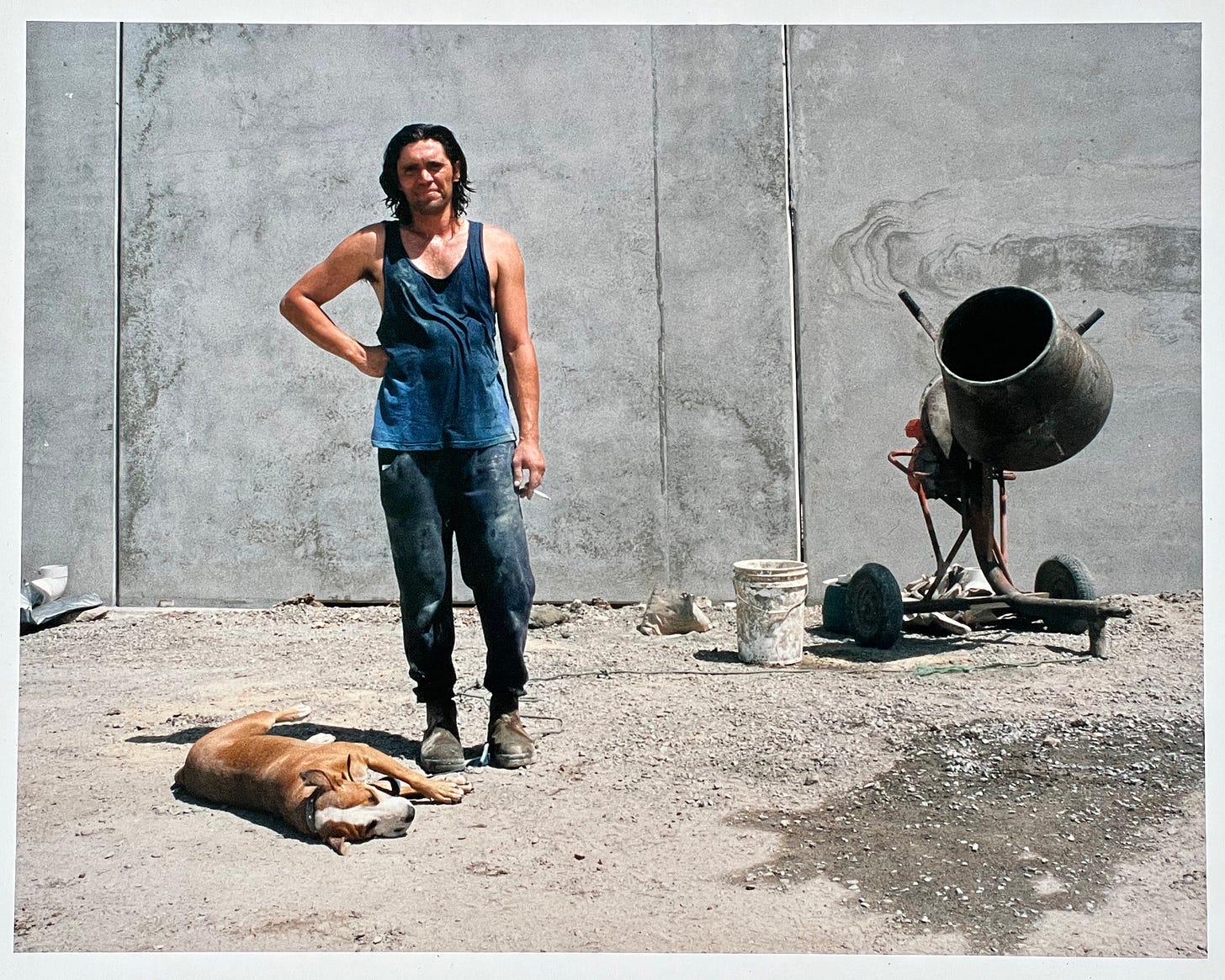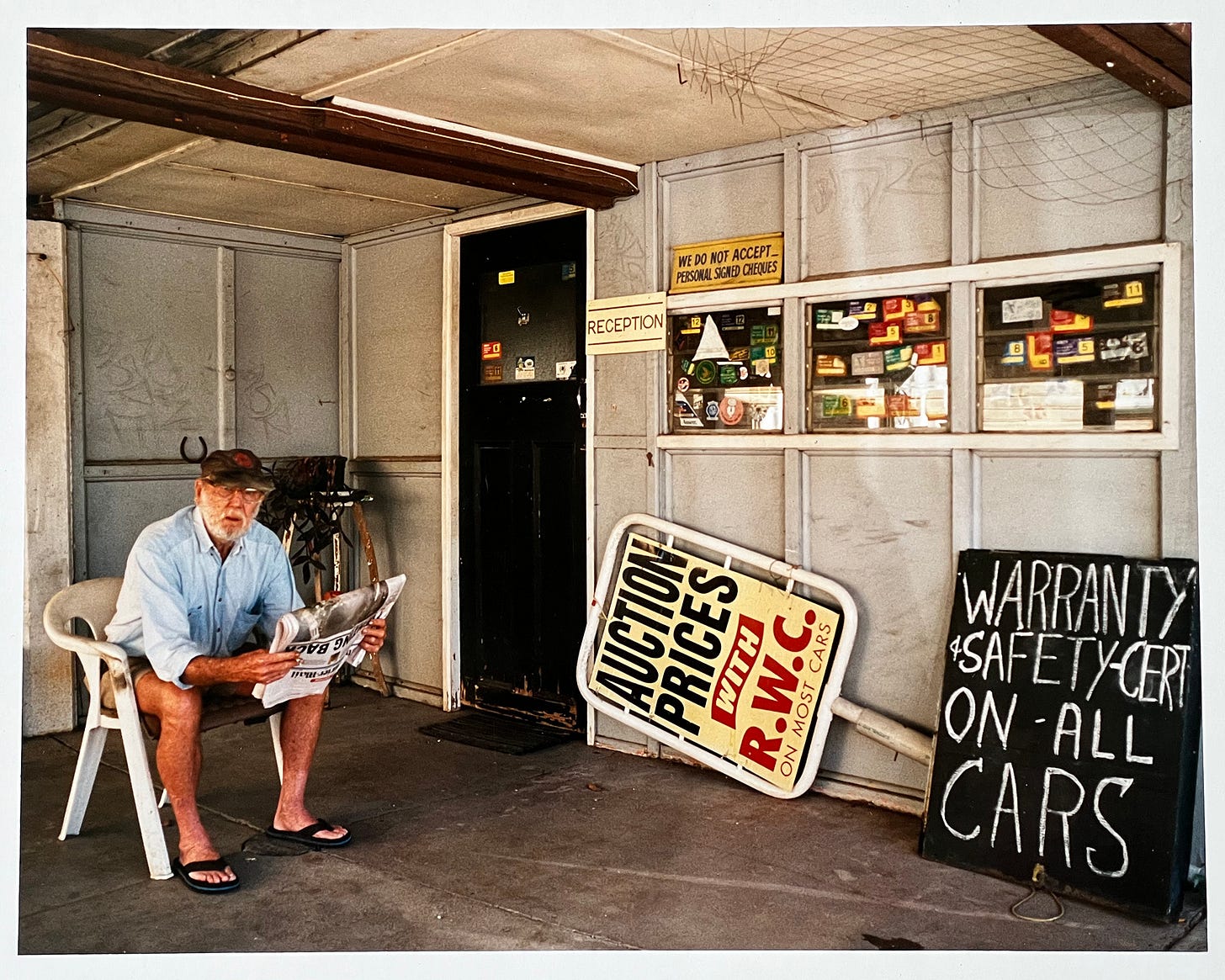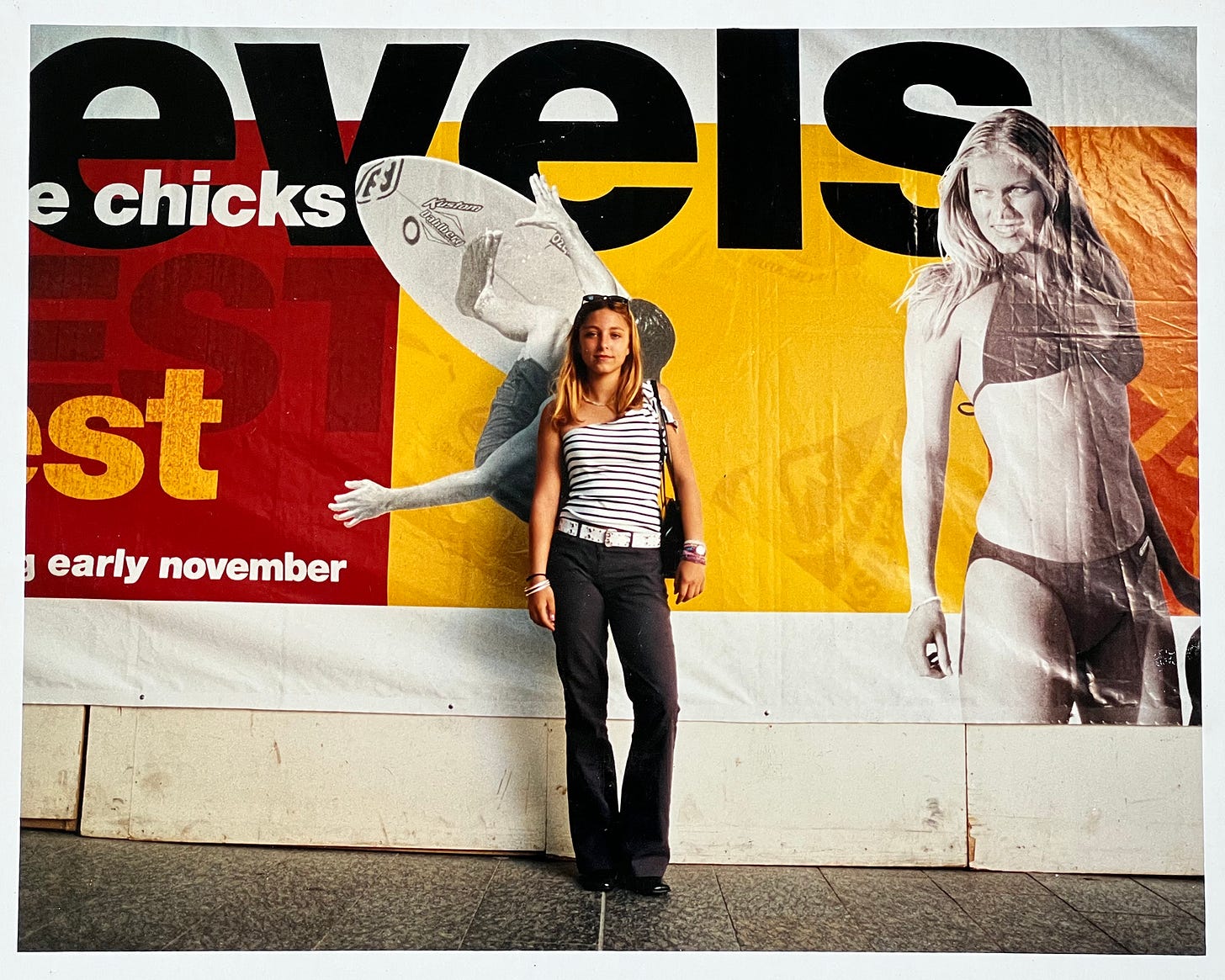Reflecting on Work I Made as an Art Student: Part One
It took me years to recognize my instincts were correct, even at the beginning
Friends,
Apologies for my hiatus over the last few weeks. I flew home to Australia, did a 14-day government quarantine, moved house, grappled with the logistics of a life transition, and amidst it all I kept trying to write, thinking the ideas and words would come. But they didn't. I was exhausted.
As of this week, I will be back to my regular weekly posts and have a few in the works I’m excited to share. This is the first of three posts looking back at student work I made in art school in Brisbane nearly twenty years ago.
Thank you for your interest and support.
Adam
I recently went rifling through some old boxes in storage and discovered photographs that I printed while I was at art college between 2001 and 2003 in Brisbane. It’s been about a decade since I last looked at these images and it got me reflecting on how I started as a photographer. I’d applied to art college on a whim—discussed in a previous post so won't dive into it here—and I would like to share some of the photos I made during my student days and reflect on what I have learned since.
Brisbane is a relatively small city; in 2001 it had around 1.6 million people. But it was the first big city I lived in after moving from my provincial hometown about 250 miles away. I was enthralled by the web of human interaction; the city was an alienating manmade landscape full of diverse human characters. I was drawn to the novelty of the high rises and anonymous commuters, the street life, and the homeless people who existed on the margins.
For my main project in my first year, I made a portrait survey of people throughout the suburbs of Brisbane. I approached organizations, asked friends, and accosted people on the street to pose for me. My aim was to depict a person within a scene that told a story about who they were and what they did—a story about Brisbane. I would find a subject then pose them in front of something that was relevant to them—a signifier that created a world through the juxtaposition of human and environment.
It’s hard to remember how each portrait came together, but I know when I arrived at the construction site to meet Patrick O'Brian, the concreter pictured above, I asked him to stand near the concrete mixer, to bring his dog into the photo, and smoke a cigarette. I was pulling as much of Patrick’s life into the frame as possible to create a simple, anthropological environmental portrait.
My approach was similar with Rochelle, a nurse at Princess Alexandra Hospital. When the media department of the hospital granted me permission to photograph a nurse for my project, I turned up at the hospital not knowing who I would photograph or what the scene would look like. When I was escorted to Rochelle and told I could make a portrait in an empty hospital room, I positioned her within a space that signified her world. The room was cluttered with medical equipment so I asked her to sit down. This pose also added something to a portrait that was otherwise unengaging. Asking Rochelle to sit on the floor added an element of intimacy and surprise that didn't exist beforehand.
Looking back at these photos they feel simple and naive, but there is a rawness to my first considered response to the world with a camera. No one told me to make environmental portraits, I did it intuitively.
As the university assignments ended and my career unfolded, I explored different methods of photography and various visual languages. I spent years emulating other photographers and trying to make work that was never in line with my instinctive response to the world. It’s important to recognize who you are. After two decades, much of my work has returned to environmental portraiture.
Recognize your instincts and hold onto them. It's the best talent you have.







I have only just completed my first year as a Bachelor of Photography student, and already I look at the work I created this year for assignments, and then look at what I had been doing before, thinking that overall I appreciate my earlier images more.
I just spoke to someone about this a couple of days ago, and I think the difference is the fact that the images I made for my assignments are just that, made almost entirely for the particular assignments, the memories associated with them are not the same as the memories provided by my earlier images which I took because I wanted to.
Maybe I am becoming more technically proficient, but with the year that has been, and the need to just get assignments done, hasn't left me with those "feel good" memories.
Love reading your stories Adam, they offer great insight into the what, why, and how of you. I hope one day I can learn to be more open, and write more betterer... 😊
Cheers,
Rohan.
p.s., I hope the life transitions, etc. all work out well. I'm not surprised you were a bit buggered.
I love reading your stories, too. And also hope that the life transitions have been mostly for the better. Good luck.
These pictures don't look naive to me, they look direct and authentic.